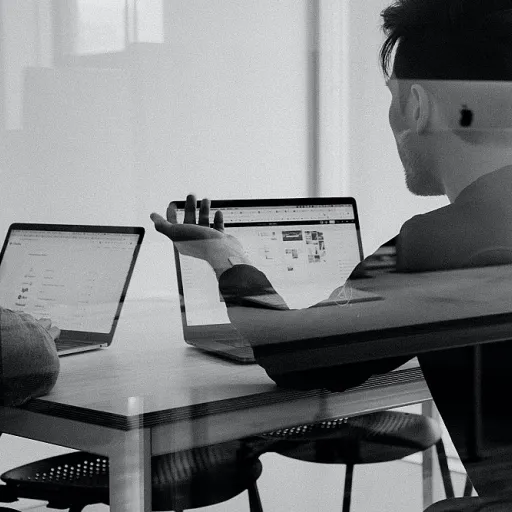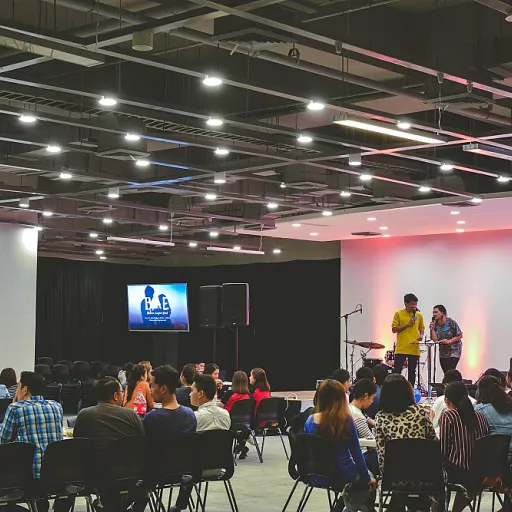
Understanding the dynamics of remote work
Grasping the Dynamics of a Technologically-Driven Work Environment
Understanding the intricacies of remote work is crucial as it transforms how companies and employees perceive their professional landscape. By acknowledging the variables that come into play, businesses can better cultivate a modern workplace environment. With the rise of hybrid work arrangements, there's a need for adaptable and smart solutions to maintain seamless productivity.
The growth of digital technology means companies must embrace new tools to facilitate communication and collaboration. Offices are no longer bound by physical space; instead, they operate in a digital arena where technology plays a pivotal role. With tools such as video conferencing and unified communications, teams can connect and stay sharp, ensuring that all members are on the same page.
Creating a smarter workplace also involves redefining how space and resources are managed. Utilizing products such as desk booking systems and digital signage can help streamline operations and reduce friction in meeting room management. By incorporating room solutions, companies can craft a more efficient and simply smarter environment.
These elements are undeniably intertwined with effective communication strategies and building a culture of trust and accountability. Initiatives like remote work optimizations outline how organizations can elevate their employee experience and embrace a hybrid workplace setup. Discover more about optimizing these dynamics in our guide on pipeline work.
Tools and technologies for a smarter workplace
Leveraging Smart Tools for Enhanced Productivity
In the landscape of remote work, the transition from a traditional office to a digital workspace has become increasingly prevalent. Companies are embracing technology-driven solutions to create a simply smarter workplace. This shift not only helps in enhancing productivity but also fosters collaboration across geographically distributed teams. One of the most transformative tools is video conferencing. It connects teams in real time, ensuring that remote employees feel as if they are part of the same meeting room. Video conferencing, combined with unified communications, supports seamless communication, fostering a hybrid workplace environment where physical presence is no longer a prerequisite for effective interaction. Digital signage and smart office solutions come into play by providing up-to-date information and facilitating better space management. For instance, room solutions for meeting room bookings can be powered by digital signage that updates in real time, thereby streamlining the process and avoiding scheduling conflicts. Moreover, workplace solutions such as desk booking systems play a crucial role in hybrid work setups. They provide flexibility to employees, allowing them to reserve their workspace at their convenience, thus optimizing the use of the office space. By using technology, companies can learn and adapt consistently, fine-tuning their remote and hybrid work strategies. The key to maintaining a sharp edge in productivity lies in continuously integrating new technology products into the workflow. This can significantly uplift the employee experience, a vital component of a modern workplace. To explore more strategies on boosting productivity while working remotely, consider reading about optimizing your remote working sessions here.Building a culture of trust and accountability
Fostering Trust and Accountability in Remote Work
Creating an efficient remote work environment greatly depends on cultivating a culture of trust and accountability. Unlike the traditional office setup, where visibility and physical presence often correlate with perceived productivity, remote work requires a different approach. Here are some crucial elements to consider:- Empower Employees: Encourage employees to take ownership of their work by assigning responsibilities that match their skills and expertise. This enhances not only their well-being but also fosters a more engaging work environment.
- Implement The Right Tools: By integrating digital solutions such as digital signage and unified communications, companies can streamline communication and maintain sharp focus on goals. These tools, along with room solutions that enable effective video conferencing, can bridge the gap between employees and teams.
- Transparent Goal Setting: Clearly outline expectations and objectives in a way that is understood by everyone involved. With smart workplace technologies, it is possible to track progress in real time, ensuring that individual and collective goals align with the company's wider aspirations.
- Regular Feedback Loops: Constructive feedback is essential for both personal growth and team cohesion. Regular check-ins provide a platform for open dialogue and help reinforce a sense of accountability.
- Promote a Culture of Trust: Trust is the foundation of a successful remote workforce. Encouraging transparency and honest communication will nurture a stable and trustworthy workplace environment.
Effective communication strategies
Effective Communication Strategies in a Remote Work Setting
In the ever-evolving landscape of remote work, effective communication is crucial for success. Transitioning from traditional office setups to remote environments, whether they are hybrid or fully digital, presents challenges that require adapting and adopting smart workplace solutions. Here are some insights and strategies to enhance communication in a remote work context:
- Unified Communications Platforms: To facilitate seamless collaboration, companies should consider leveraging unified communications and collaboration tools. Platforms like video conferencing and instant messaging are essential to keep teams connected in real time, whether they are in digital meeting room environments or scattered across different locations.
- Adopt a Smart Office Approach: Incorporating elements of a smarter workplace by integrating digital signage and desk booking systems can significantly enhance the remote work experience. These technologies bridge the gap between remote and on-site employees, fostering a workplace that supports both productivity and innovation.
- Clear Guidelines and Regular Updates: In a remote or hybrid workplace, it is crucial to establish clear communication guidelines. Regular updates and structured communication help ensure that everyone is on the same page, reducing potential misunderstandings and fostering a culture of transparency.
- Build Trust Through Open Lines of Communication: Consistent, open communication fosters trust and helps in cultivating accountability within teams. Employees should feel empowered to share ideas and feedback through appropriate channels without fear of repercussions.
- Use Technology to Your Advantage: Embracing the right technology is key to enhancing communication in a remote setting. Employing solutions such as room solutions for virtual meetings, along with communication tools that cater to both synchronous and asynchronous communication, optimizes the employee experience.
Adopting these strategies not only contributes to a more efficient modern workplace but also ensures that the remote work environment supports effective collaboration and communication. Creating a holistic communication strategy tailored to the organization's specific needs and work solutions will have a profound impact on the overall success of remote endeavors.
Balancing flexibility and structure
Finding the Harmony Between Flexibility and Structure
Balancing flexibility and structure is a cornerstone of a successful remote work environment. While remote work promises a shift from traditional office norms, effective structuring forms the backbone that supports productive and cohesive teams. Here's how companies can uphold this balance:- Establish Clear Schedules: While flexibility is paramount, maintaining a semblance of routine helps employees stay sharp and productive. Companies can introduce work solutions like setting core hours, during which all team members should be online, while allowing for flexibility beyond those hours. This approach resembles a hybrid work model, merging the old and the new.
- Employ Digital Tools Wisely: Utilizing digital technology like unified communications and smart workplace solutions facilitates real-time collaboration. These digital products help manage tasks efficiently and ensure that remote teams can work seamlessly from different locations.
- Space Management: Though everyone isn’t in a physical office, the digital space should be organized smartly. Tools such as desk booking and digital signage provide clarity in a hybrid workplace, creating virtual meeting rooms that streamline efforts and focus.
- Empower Employees: It’s crucial that companies show trust in their employees to manage their schedules, leading to better employee experiences. Employees should be encouraged to personalize their workspaces in a way that boosts their productivity, enabling flexibility.
- Real-Time Feedback: Offer continuous feedback mechanisms. Regular check-ins between managers and employees maintain accountability and guide the use of workplace solutions for better output.
Measuring success in a remote work setting
Tracking Performance in a Virtual Context
Effectively measuring success in a remote work setting involves understanding the impact of the shift from a conventional office to a more flexible workplace. It requires sharp insight into how work is completed across various environments including the digital, hybrid, and smart workplaces. Companies need to harness the power of unified communications and other workplace solutions to ensure that goals are met, while also maintaining a high standard of employee experience.
Here are key strategies to measure success effectively:
- Define Clear Metrics: Metrics should reflect not only productivity but also employee satisfaction and engagement. Use digital tools to track key performance indicators (KPIs) and make data-driven decisions.
- Implement Real-Time Monitoring: Technologies like digital signage and smart office solutions can provide data on how office space is being utilized. This helps in managing resources smartly and planning better hybrid workplace strategies.
- Utilize Unified Communication Tools: Video conferencing and other collaborative technologies enable clearer communication and help maintain a virtual office environment conducive to working efficiently.
- Encourage Employee Feedback: Regular feedback channels help management understand what employees need to be more effective, thus guiding better work solutions.
- Leverage Space Management Systems: Meeting room and desk booking systems are essential to coordinate hybrid work and ensure efficient use of physical space, even from afar.
It's crucial for teams to not only adapt new workplace solutions but also to learn how these technologies can transform and enhance productivity. As companies adjust their strategies in the modern workplace, maintaining a balance between flexibility and structure will help in creating a simply smarter remote work environment. Understanding these dynamics will arm your office with the tools needed to thrive in today’s digital and hybrid workspaces.












